In Madrid, there are few streets that are brighter, livelier or more bustling than Calle Arenal. This street is located just a stone´s throw from Puerta del Sol and has all the excitement of the centre of the city. Calle Arenal starts next to the very central point of Madrid, thus making it one of the busiest streets of the city. We must also add that it is a very commercial street full of businesses that are open to the public. Hence, large numbers of people enjoy walking along it night and day.
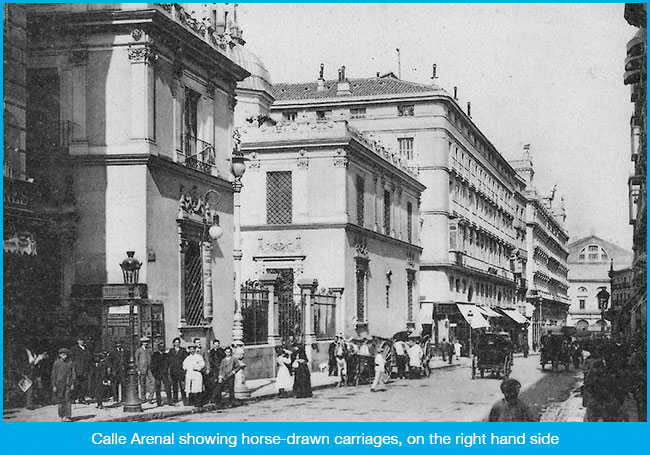
But, what was Calle Arenal like decades ago? What kind of atmosphere and aspect did it have in those days? Some time ago, in the blog of Estate One, we took a walk into the past and wrote about Plaza de Cibeles. Today, we will tell you about the past of Calle Arenal and show you what life was like in one of the most traditional and authentic streets in Madrid.
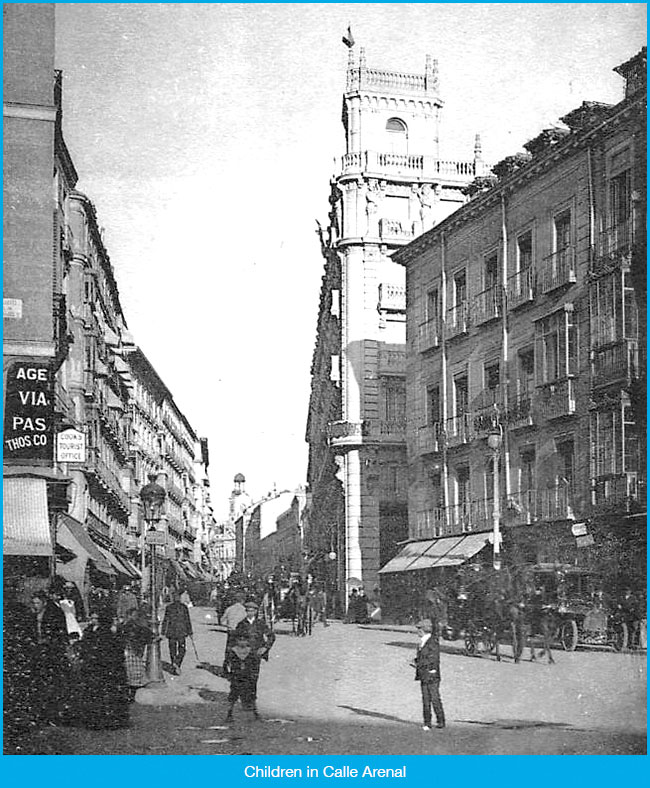
A VERY PALATIAL ASPECT
The name Calle Arenal (“Sandy Spot Street”), comes from the sandy ground that was located, centuries ago, in the area and that separated the suburbs from Madrid. In the XVI century, this street was lined with small palaces which were later replaced by mansions where wealthy families lived.
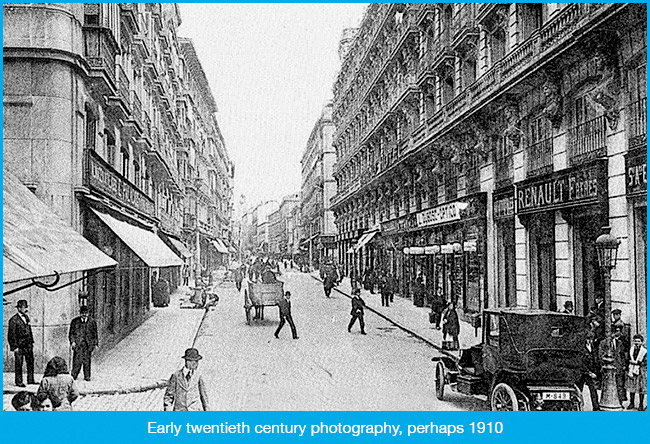
Even though the small palaces did not last over time, their indelible memory did; proof of this is that in the following centuries new small palaces were built in Calle Arenal. For instance, Palacio de Gaviria which was constructed in the XIX century and still exists nowadays in 9, Calle Arenal.
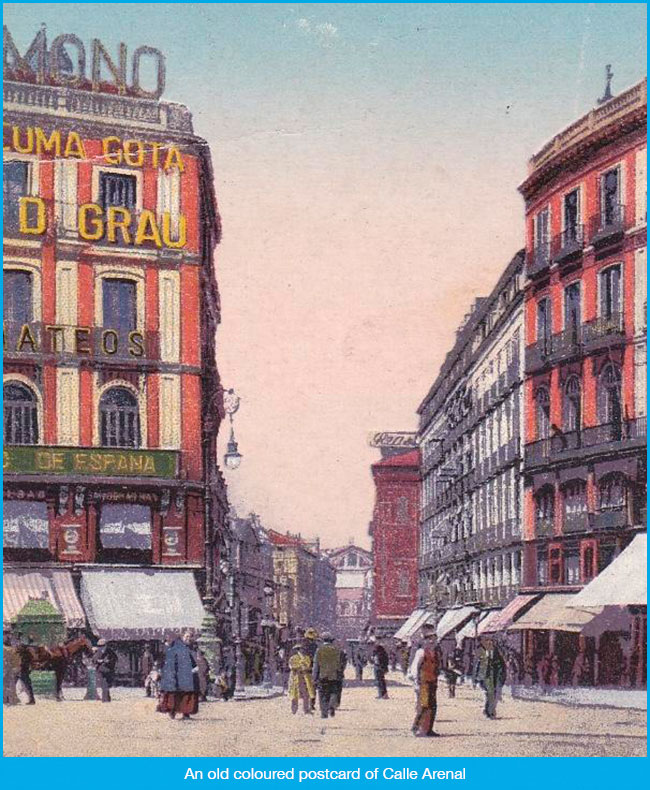
Just like at present, Calle Arenal has always been very hectic and busy, full of people coming and going incessantly, filling the street with splendour and colour. In the XIX century, the street was already known for having a large number of boarding houses, hostels and inns. Currently, some of them still exist and this shows us that travellers have not stopped going throughout the years to Calle Arenal.

CAFES WITH A LONG-ESTABLISHED TRADITION
We cannot talk about the past of Calle Arenal without recalling its mythical cafes where important people and the bohemian in vogue arranged to meet decades ago. We refer to places of the stature of Café de Europa or Nuevo Café de Levante, both of which have disappeared but are nonetheless impossible to forget if we think about the social gatherings that took place there in those days.
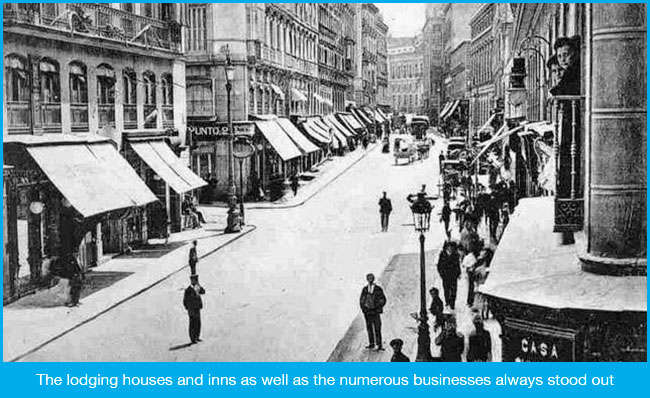
Some of the cultural figures who used to go were Azorín, Valle-Inclán, Pío Baroja or Julio Romero de Torres. In the past, Calle Arenal had plenty of mythical bookshops such as Librería de Requena, Librería Pupart or Librería Hernando. None of them exist nowadays.
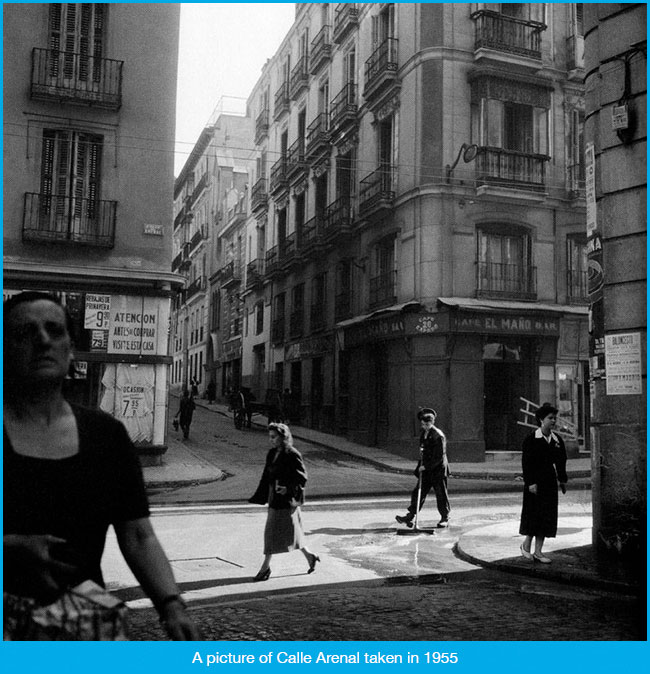
Nevertheless, at present, we can still visit Librería de los Bibliófilos Españoles which dates back to 1910 and is located in 1, Calle Arenal. We can also visit centenary shops such as Confitería Prast which opened in 1866 and is located in 8, Calle Arenal. Also, Chocolatería de San Ginés which dates back to 1894 and is located in the alley of San Ginés, next to Calle Arenal.
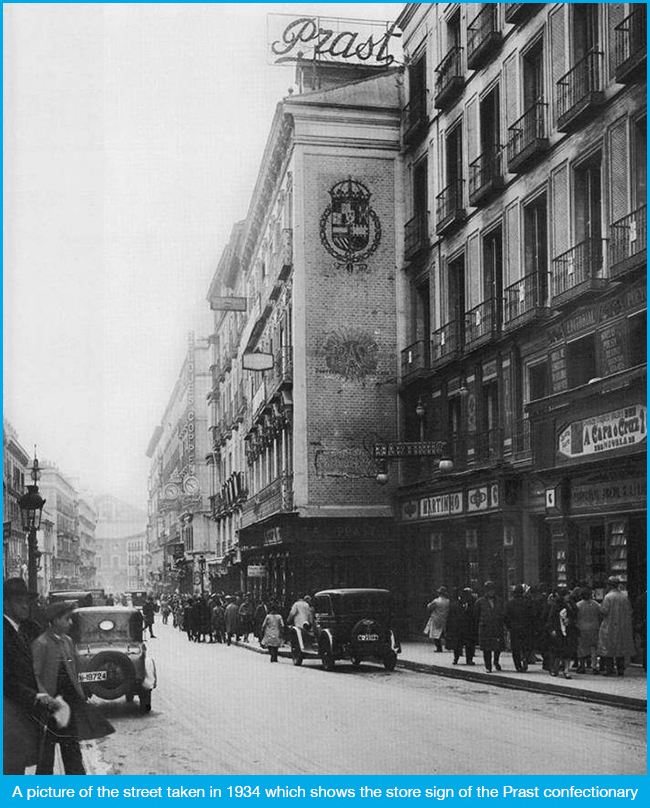
We must also highlight Teatro Eslava, currently known as Sala Joy Eslava, inaugurated in 1870 and located in 11, Calle Arenal. Sala Joy Eslava has witnessed hectic and frenetic nights throughout the years. Calle Arenal underwent one of its most important transformations between the years 2006-2007; in that time it was completely renovated in order to pedestrianise it.
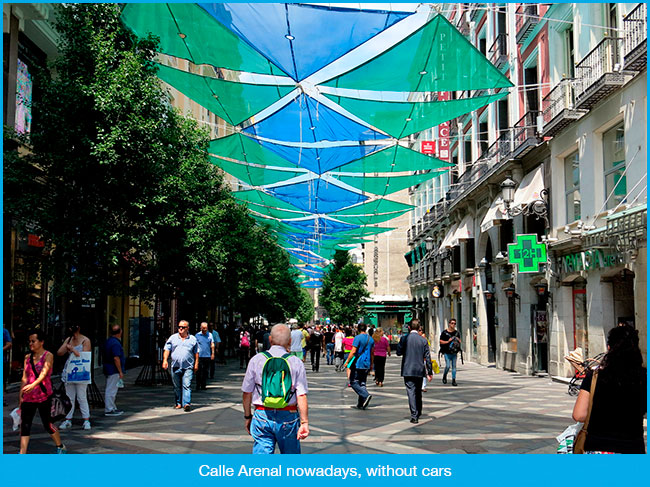
DID YOU KNOW THAT…?
In 1896, an unprecedented measure was taken in order to try to reduce the tremendous noise in Madrid. It was decided that the roads were to be covered with cork so as to deafen and muffle the noise of wheels and horse hooves. But, before introducing this noise-reduction system in all the city, it was decided that it should first be tested on one road, and the one chosen was Calle Arenal. When the road was covered, the result was amazing: the noise was greatly reduced. However, this joy did not last for long. It only lasted till the first rainy day. The rain crumbled and dissolved the cork turning the project into a complete disaster, to the dismay of the ruling class who naturally did not extend this initiative to any other street.
Nowadays picture: Manuel M. V.



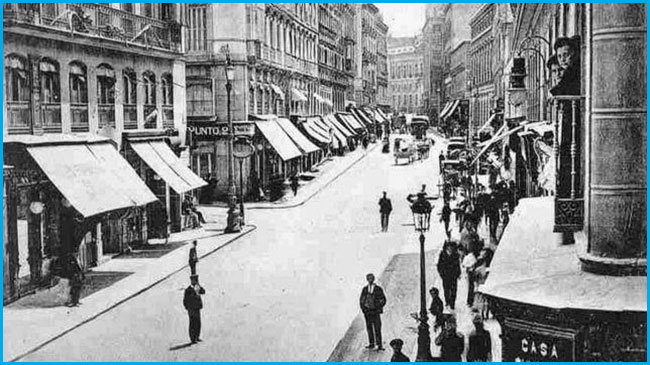
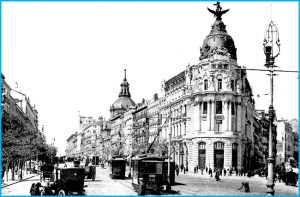
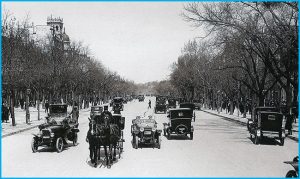
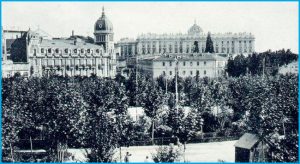
 Spanish
Spanish English
English